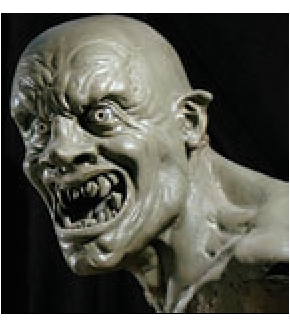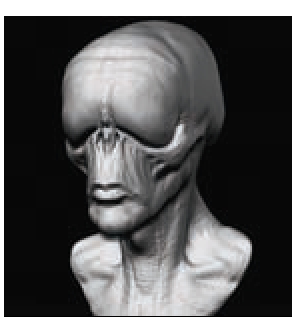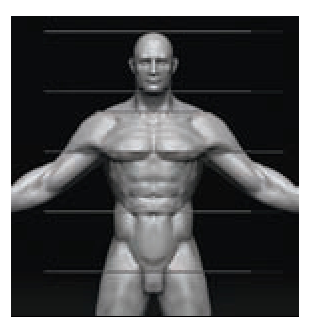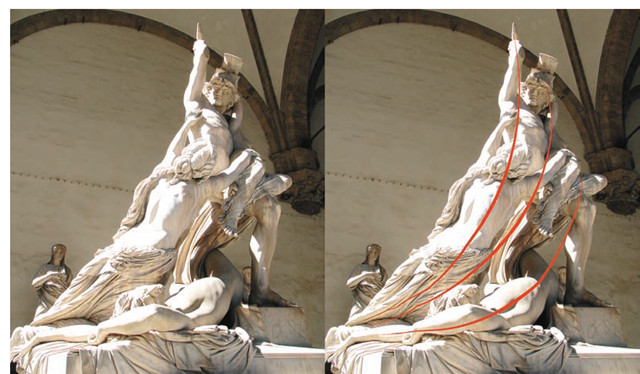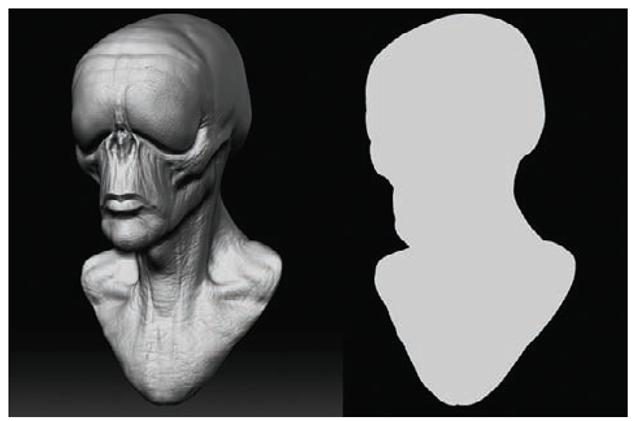One of the most exciting aspects of ZBrush is the way it allows the artist to interface directly with the model and create in a spontaneous and organic fashion, just as if working with balls of digital clay. Thousands of years of artistic tradition have given us a wealth of techniques when it comes to the discipline of sculpting. While traditional painters have had applications like Painter and Photoshop to open the doors to the digital realm, sculptors were out in the cold—until ZBrush.
When learning to become a better digital sculptor, you will benefit from the same traditions and tenets that guided traditional sculptors for centuries. Just as in drawing and painting, all the fundamental artistic lessons applicable to sculpting are true on the computer as well. Whether we are sculpting an alien, a princess, a warrior, a horse, or an abstract form exploration, our primary concerns will always be the same (Figure 1.1).
Gesture
Gesture represents the dynamic curve of the figure. In life drawing, these lines are quickly laid down on paper and do not necessarily seek to describe the contour or form of the figure at all (Figure 1.2). The function of the gesture drawing is to capture the rhythm and motion of the pose, the thrust of the figure, and the action inherent in its posture (Figure 1.3). Keeping a sketchbook of quick, loose sketches you don’t intend to show is a great way to train yourself to find the gesture and rhythms in a figure. These kinds of exercises help sharpen your eye, and this translates into better figures when sculpting from the imagination.
Figure 1.1 Examples of traditional clay sculpture
Figure 1.2 A selection of gesture sketches
Gesture is the source of the life of a drawing or sculpture. It must be addressed from the outset—if the gesture is poor, it can be difficult to introduce it later into the process.
If you start with a strong gesture, the sculpture will be appealing and alive from the start. A wooden, stiff pose with a poor gesture can have acceptable anatomical form and skin details while still being fundamentally unappealing (Figure 1.4).
Figure 1.3 An example of gesture and action
The rules of gesture apply to even a sculpture that is not a figure. Notice in the lion’s head how the gesture of the lines in the mane serve to create a sense of flowing action down toward the ring (Figure 1.5). These lines are more of a graphic consideration and can almost be considered in the abstract. Their presence serves to strengthen the visual impact.
Closely linked to gesture is the concept of rhythm. Master draftsman George Bridgman describes rhythm as “in the balance of masses the subordination of the passive or inactive side to the more forceful and angular side in the action.” That is to say, the interplay between the active and passive curves in the body combines to create a sense of rhythm in your sculpture (Figure 1.6).
Figure 1.4 This Hercules from the Piazza della Signoria in Florence, Italy, is an example of bad gesture in an otherwise good sculpture.
Figure 1.5 Lion head sculpture
Figure 1.6 In this image of Cellini’s Perseus, I have indicated the alternating curves that establish a sense of rhythm down the length of the figure. Notice how they alternate, as in the inset image.
Figure 1.7 Notice how when light and shadow are removed, only a silhouette remains.
Gesture is an important consideration no matter what you may be sculpting. It is gesture that makes a sculpture exciting, whether it is a door knocker, a monster, or a human. Especially when dealing with figurative sculpture, a well-executed gesture with special attention to rhythm helps establish a sense of weight and balance in the figure.
